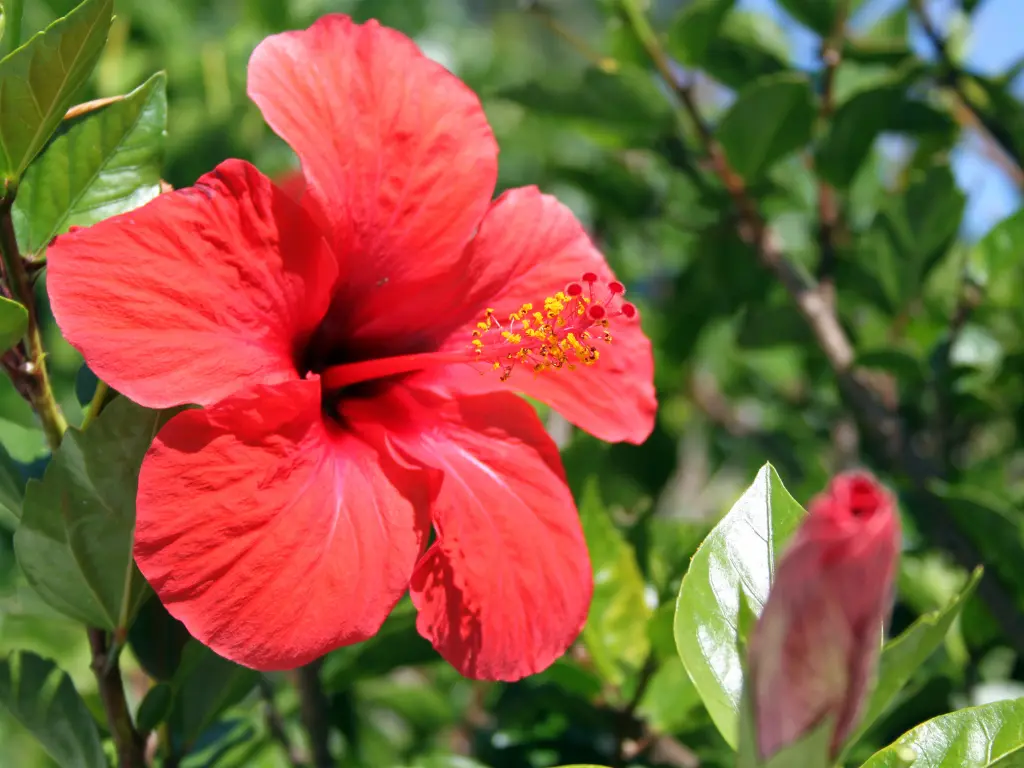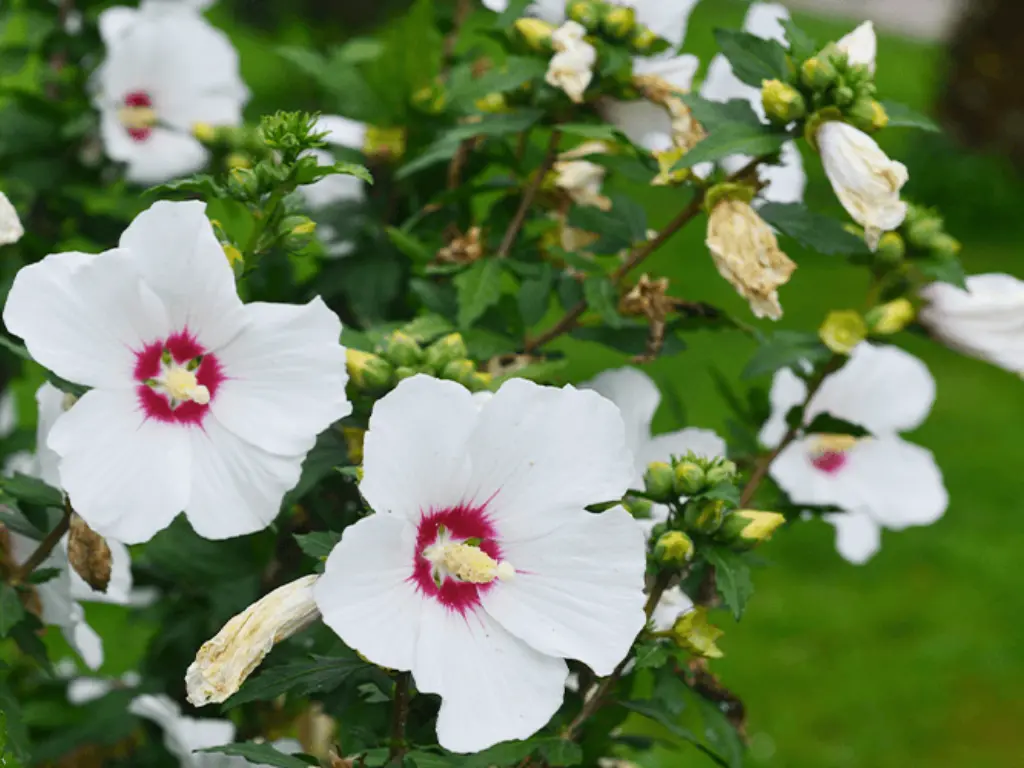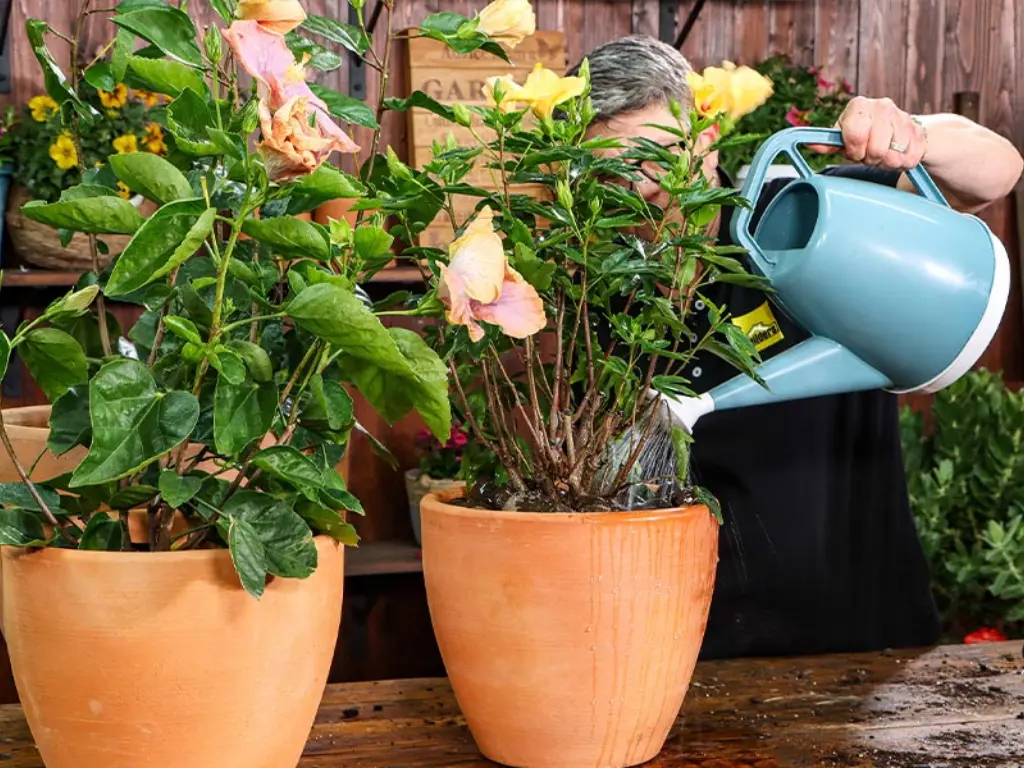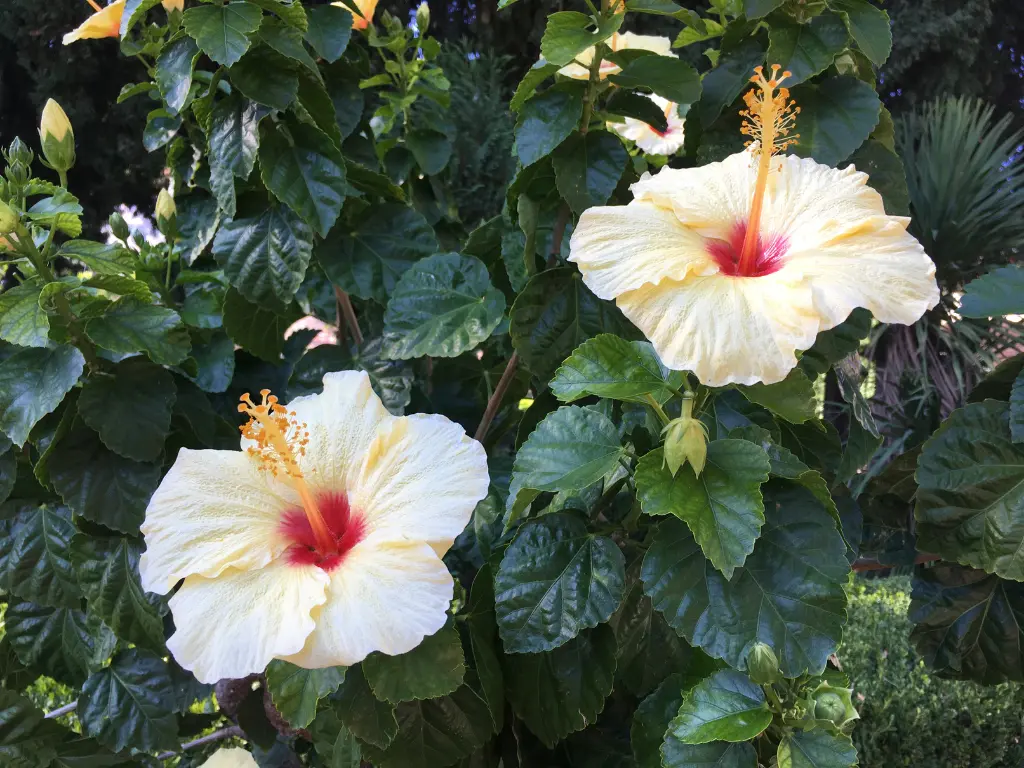Hibiscus plants, with their bold and beautiful flowers, are a stunning addition to any garden or home. Whether you’re a beginner or a seasoned gardener, growing hibiscus can be an incredibly rewarding experience. In this guide, we’ll take you through everything you need to know, from caring for hibiscus to tips on how to troubleshoot common problems and encourage blooming.
What Is a Hibiscus Plant?

Hibiscus is a genus of flowering plants that includes both tropical and hardy varieties. Known for their large, showy blooms and lush green foliage, hibiscus plants are often seen in gardens, landscapes, and homes. The flowers come in a range of colors, including red, yellow, pink, white, and purple. The most common types are Hibiscus rosa-sinensis, the tropical hibiscus, and Hibiscus syriacus, the hardy hibiscus (also known as Rose of Sharon).
Hibiscus plants can grow as small shrubs, large shrubs, or even trees, depending on the variety. They are typically grown for their stunning flowers and can be found in both indoor and outdoor spaces, making them versatile and appealing to many gardeners.
Benefits of Growing Hibiscus Plants
Hibiscus plants are more than just pretty flowers—they offer several benefits:
-
Aesthetic Appeal: With their vibrant, large blooms, hibiscus plants can add a tropical flair to any garden or indoor space.
-
Medicinal Uses: Hibiscus flowers have been used in traditional medicine for various purposes, including lowering blood pressure and boosting immune health.
-
Pollinator-Friendly: Hibiscus attracts bees, butterflies, and hummingbirds, helping to support local pollinator populations.
Landscaping Uses
Hibiscus plants are perfect for landscaping as they can be used in flower beds, borders, or even as ornamental hedges. Tropical hibiscus varieties are often used for their bold blooms in sunny spots, while hardy hibiscus varieties can add height and beauty to your garden.
Choosing the Right Hibiscus for Your Garden

Before you dive into planting hibiscus, it’s important to choose the right type for your garden’s climate and growing conditions. There are two main categories of hibiscus plants to consider:
-
Hardy Hibiscus: These varieties can withstand cooler climates and even frost. Rose of Sharon is a popular type of hardy hibiscus.
-
Tropical Hibiscus: Known for their large, showy flowers, these varieties thrive in warm climates and are often grown as annuals in cooler regions.
When selecting your hibiscus, keep in mind the USDA hardiness zone in your area and choose a plant that matches the local climate. Tropical varieties need consistent warmth and sun to thrive, while hardy hibiscus varieties can grow well even in less-than-ideal conditions.
Ideal Growing Conditions for Hibiscus
To grow healthy hibiscus plants, it’s essential to provide them with the right growing conditions.
Sunlight Requirements
Hibiscus plants thrive in full sunlight, which is crucial for their growth and blooming. These plants require at least 6-8 hours of direct sunlight each day to produce vibrant flowers. If growing indoors, place your hibiscus near a south-facing window where it can receive plenty of sunlight.
Temperature and Hardiness Zones
Tropical hibiscus varieties prefer warm temperatures and do best in USDA hardiness zones 9-11. They cannot tolerate frost and will need to be brought indoors during colder months in cooler climates. Hardy hibiscus varieties, like Rose of Sharon, can tolerate cooler temperatures and are suited for zones 4-9.
Soil Preferences
Hibiscus plants prefer well-draining, slightly acidic soil with a pH level between 6.0 and 6.5. The soil should be rich in organic matter to support healthy root development. If planting in a container, use a high-quality potting mix that promotes good drainage.
Read more:
- How to Prepare Soil to Plant: A Step-by-Step Guide for Beginners
- Top 10 Best Plants That Improve Soil Quality, Making Your Whole Garden Thrive
Planting Hibiscus
When planting in the ground, dig a hole twice as wide as the root ball and just as deep. Gently loosen the roots before planting, ensuring they have space to grow. For container plants, choose a pot with drainage holes to prevent waterlogging.
Caring for Hibiscus Plants

Consistent care ensures that your hibiscus plant will thrive and produce beautiful flowers year after year.
Watering
Hibiscus plants need regular watering, especially during the growing season. However, overwatering can cause root rot, so it’s important to let the soil dry out slightly between waterings. Water deeply, ensuring that the water reaches the roots. During the winter months, reduce watering as the plant enters a dormant phase.
Fertilizing and Feeding
Hibiscus plants are heavy feeders, so they require regular fertilization to encourage growth and blooms. Use a balanced fertilizer that’s high in potassium and low in nitrogen to promote flower production. Apply the fertilizer every 6-8 weeks during the growing season (spring through early fall). Be cautious not to over-fertilize, as this can lead to excessive leaf growth with few blooms.
Pruning and Maintenance
Pruning is essential to maintain the shape of your hibiscus plant and encourage new growth. Remove dead or damaged stems, and deadhead spent flowers to make room for new blooms. Tropical hibiscus varieties should be pruned in early spring, just before the growing season begins, while hardy hibiscus varieties can be pruned in late winter.
Tips for Growing Hibiscus Indoors
If you’re growing hibiscus indoors, you’ll need to make a few adjustments to the care routine:
-
Light: Hibiscus needs at least 6-8 hours of direct sunlight, so make sure to place your plant near a bright window. If sunlight is insufficient, you may want to use a grow light.
-
Humidity: Hibiscus plants prefer higher humidity, so consider using a humidity tray or misting the plant regularly to keep it happy.
Common Problems and How to Fix Them
Even the healthiest hibiscus plants can encounter issues. Here are some common problems and their solutions:
-
Yellowing Leaves: This can be caused by overwatering, nutrient deficiencies, or pests. Ensure that the plant is getting enough sunlight and proper care.
-
No Blooms: If your hibiscus isn’t blooming, it might not be getting enough sunlight or nutrients. Make sure it’s receiving at least 6-8 hours of direct sunlight each day and use a potassium-rich fertilizer.
-
Pests: Hibiscus plants are prone to pests like aphids, mealybugs, and whiteflies. Treat infestations with insecticidal soap or neem oil.
Propagating Hibiscus Plants
If you want more hibiscus plants, propagating from cuttings is an easy way to grow new ones. Here’s how:
-
Choose a Healthy Stem: Cut a 4-6 inch piece of stem from a healthy hibiscus plant.
-
Prepare the Cutting: Remove the lower leaves and dip the cutting in rooting hormone.
-
Plant the Cutting: Place the cutting in a pot with well-draining soil, and keep it moist and in a warm spot with indirect light.
-
Transplant Once Rooted: After a few weeks, roots will develop, and you can transplant the new hibiscus into a larger pot or directly into your garden.
How to Get Hibiscus to Bloom

To get the best blooms from your hibiscus, follow these tips.
Blooming Period
Hibiscus plants typically bloom during the warmer months (spring through summer), with some varieties continuing to bloom into fall. Tropical hibiscus varieties tend to bloom year-round if grown indoors in a controlled environment.
How to Encourage More Blooms?
-
Increase Sunlight: Ensure the plant is getting at least 6-8 hours of direct sunlight each day.
-
Prune Regularly: Remove spent flowers and prune back dead or weak stems to encourage more blooms.
-
Use the Right Fertilizer: A fertilizer high in potassium will promote blooming, while high nitrogen fertilizers can result in excessive leaf growth with fewer flowers.
Frequently Asked Questions (FAQs)
-
How often should I water my hibiscus plant?
Water your hibiscus when the top inch of soil feels dry. Avoid overwatering, as it can lead to root rot. -
Can I grow hibiscus indoors?
Yes, hibiscus can thrive indoors if placed in a bright, sunny spot with plenty of direct light. Be mindful of humidity and temperature. -
Why aren’t my hibiscus flowers blooming?
This could be due to insufficient sunlight, nutrient deficiencies, or incorrect watering. Ensure your plant gets enough sunlight, water, and proper feeding. -
What is the best fertilizer for hibiscus plants?
Use a balanced fertilizer with higher potassium content to encourage flowering. Avoid fertilizers high in nitrogen, which promote leaf growth instead of blooms.
Conclusion
Growing hibiscus plants is an enjoyable and rewarding experience, especially when you see those gorgeous blooms. By providing your hibiscus with the right conditions, regular care, and attention, you can ensure it thrives for years. Whether you’re growing hibiscus in a pot or planting it in your garden, this tropical beauty will surely be the highlight of your space.
With the tips and advice in this guide, you’re now equipped to care for your hibiscus plant, troubleshoot common issues, and encourage it to bloom abundantly. Happy gardening!
Related Posts:
